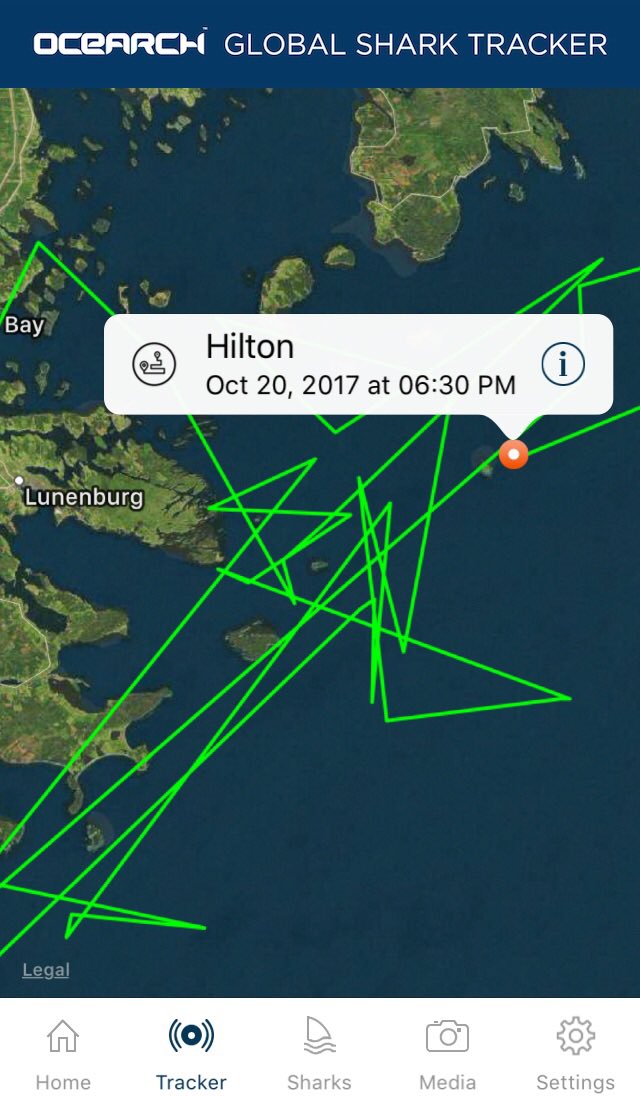
The habitat around Maui can support fairly resident tiger sharks, and it also attracts tiger sharks from other parts of Hawaiʻi.Īreas that are most frequently visited by tiger sharks around Maui include waters adjacent to popular ocean recreation sites. This type of shelf habitat is home to a wide variety of shark prey, and Maui Nui has more of this shelf habitat than all of the other main Hawaiian Islands combined. The study revealed that tiger sharks prefer to spend time on insular shelf habitat, which is a gently-sloping area between the shoreline and the shelf break at a depth of around 600 ft. The satellite tag gets attached to the shark’s dorsal fin and sends a signal every time the fin surfaces the water. In order to better understand tiger shark movement patterns, the Shark Research Group from the Hawaiʻi Institute of Marine Biology equipped 41 tiger sharks with satellite and/or acoustic tags off Maui and Oʻahu and tracked their movements for up to two years.Įxperts tag a tiger shark with a tracking device in the waters off Maui. Maui witnessed a higher number of unprovoked shark bites in 20. Studying Movement Patterns of Tiger Sharks off Maui December 2013 – September 2015 Integrated Ocean Observing System ( IOOS) is currently supporting efforts as part of the Ocean Technology Transition ( OTT) Project. PacIOOS provides ongoing support for the Shark Research Team and the U.S. along with other members of the Shark Research Team of the Hawaiʻi Institute of Marine Biology ( HIMB) of the School of Ocean and Earth Science and Technology ( SOEST) at the University of Hawaiʻi at Mānoa ( UH). Project Partnersĭata are collected by Principal Investigators Kim Holland, Ph.D. Temperature profiles will be made available through the Animal Telemetry Network Data Assembly Center. Analysis of performance so far indicates that when a shark surfaces within range of a land-based receiver, 100% of transmitted messages are successfully received. Land-based receivers can significantly increase data recovery and are able to detect signals in a range of 80-90 km. However, since Argos satellite availability averages only 6-12 minutes per hour in Hawaiʻi, land-based receivers were installed at high elevations around Maui and Oʻahu to augment the satellite array and increase data throughput from fin-mounted tags. In the past, data from tagged sharks were solely transmitted through the orbiting satellites system whenever the animal surfaced. This is the first example of using “sharks as oceanographers.” Data will be made available in near-real time to databases that inform models to predict ocean circulation patterns (e.g., to improve weather forecasting). The tags are also capable of acquiring GPS–quality positional “fixes” associated with these profiles. In addition to the sharks’ locations, this new generation of tags records important oceanographic data, such as ocean temperature and oxygen profiles, and sea surface temperature. Second, the project is testing two new technologies a new type of satellite tag and a new way of detecting transmissions from those tags.Ī tiger shark in the Hawaiian Islands with the latest generation of satellite tags. First, the Shark Research Group from the Hawaiʻi Institute of Marine Biology expects to gain valuable insights about shark behavior and habitat selection. Note that the accuracy of these “fixes” varies from within several yards to up to a mile from the shark’s actual location. The square pink symbol indicates the original tagging location and the bright yellow dot shows the last reported detection.

Placing your cursor over a location spot gives you the date and time of the event. Pick a shark from the slider to watch tracks from recently tagged sharks. These tags are attached to the shark’s dorsal fin and send a signal every time the fin breaks the surface. This map shows the movements of Hawaiʻi tiger sharks fitted with the latest generation of satellite tags. Tagged Tiger Sharks to Collect Behavioral and Oceanographic Data 2016 – present

Exclusive Tracking Map - Follow your shark's incredible journey on an interactive tracking map.DISCLAIMER: This is not a warning system and does not provide real-time monitoring. Meet Your Shark- Learn your shark's name, size, and get their picture! Gain knowledge of their amazing stories and where they came from. Follow their incredible journey on an interactive tracking map! Gain knowledge of their amazing stories, where they came from, and best of all. Learn your animal's name, size and get their picture.
shark)? They'll each come with a different animal! #1 Gift of 2022! Each bracelet tracks an animal and helps to save wildlife!Įach bracelet comes with a sea turtle, elephant, polar bear, lion or shark to track on your phone, tablet, or computer! Want two bracelets of the same kind (ie.


 0 kommentar(er)
0 kommentar(er)
